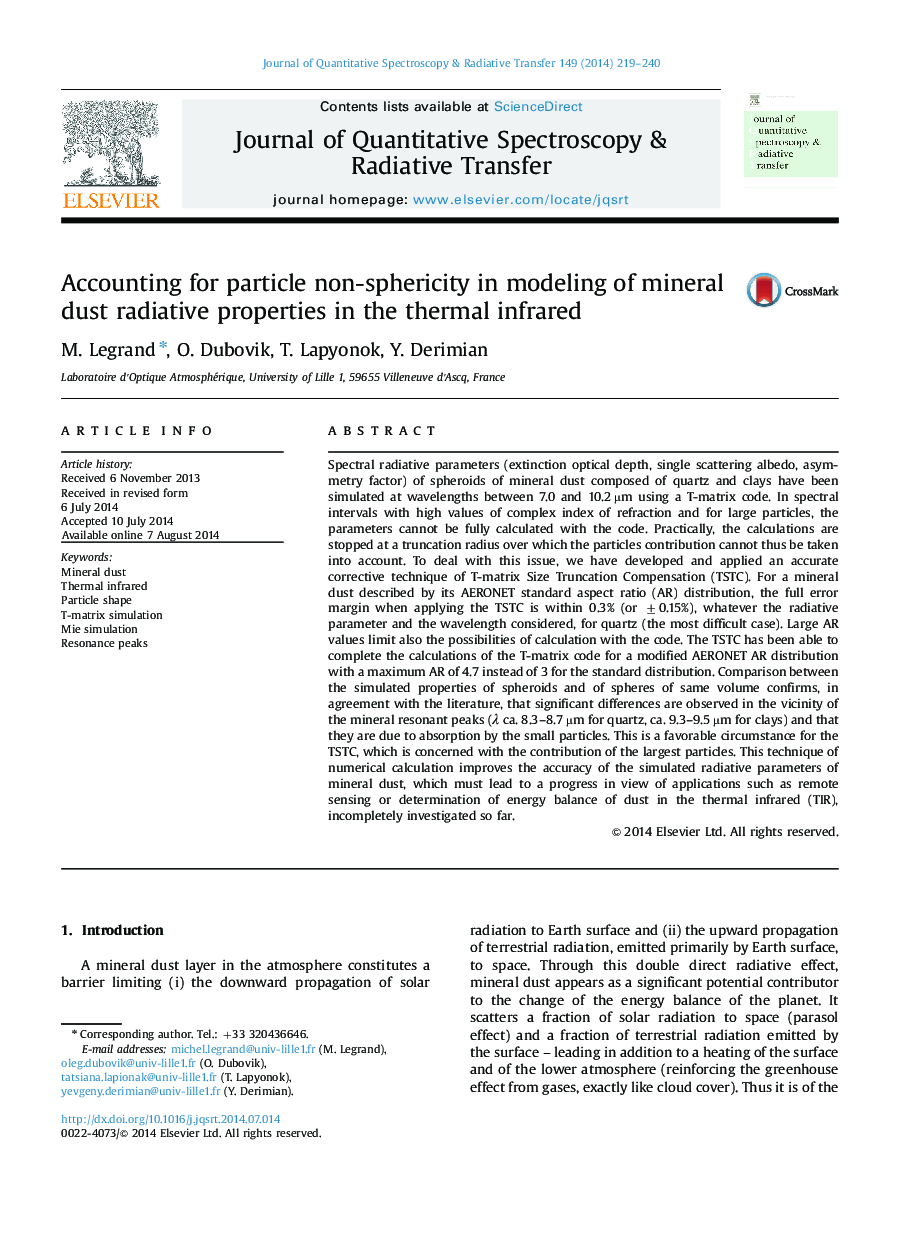| کد مقاله | کد نشریه | سال انتشار | مقاله انگلیسی | نسخه تمام متن |
|---|---|---|---|---|
| 5428272 | 1508666 | 2014 | 22 صفحه PDF | دانلود رایگان |
- Completion of computation of mineral spheroids radiative properties with the TSTC.
- Differences between spheres and spheroids resonances peaks for quartz and clays.
- Change of resonance peaks number and wavelengths for spheroids aspect ratio change.
- Minerals resonance peaks depend on the fine dust particles amount and properties.
- Focus on the description of fine dust particles (shape, composition and structure).
Spectral radiative parameters (extinction optical depth, single scattering albedo, asymmetry factor) of spheroids of mineral dust composed of quartz and clays have been simulated at wavelengths between 7.0 and 10.2 µm using a T-matrix code. In spectral intervals with high values of complex index of refraction and for large particles, the parameters cannot be fully calculated with the code. Practically, the calculations are stopped at a truncation radius over which the particles contribution cannot thus be taken into account. To deal with this issue, we have developed and applied an accurate corrective technique of T-matrix Size Truncation Compensation (TSTC). For a mineral dust described by its AERONET standard aspect ratio (AR) distribution, the full error margin when applying the TSTC is within 0.3% (or ±0.15%), whatever the radiative parameter and the wavelength considered, for quartz (the most difficult case). Large AR values limit also the possibilities of calculation with the code. The TSTC has been able to complete the calculations of the T-matrix code for a modified AERONET AR distribution with a maximum AR of 4.7 instead of 3 for the standard distribution. Comparison between the simulated properties of spheroids and of spheres of same volume confirms, in agreement with the literature, that significant differences are observed in the vicinity of the mineral resonant peaks (λ ca. 8.3-8.7 µm for quartz, ca. 9.3-9.5 µm for clays) and that they are due to absorption by the small particles. This is a favorable circumstance for the TSTC, which is concerned with the contribution of the largest particles. This technique of numerical calculation improves the accuracy of the simulated radiative parameters of mineral dust, which must lead to a progress in view of applications such as remote sensing or determination of energy balance of dust in the thermal infrared (TIR), incompletely investigated so far.
Journal: Journal of Quantitative Spectroscopy and Radiative Transfer - Volume 149, December 2014, Pages 219-240
